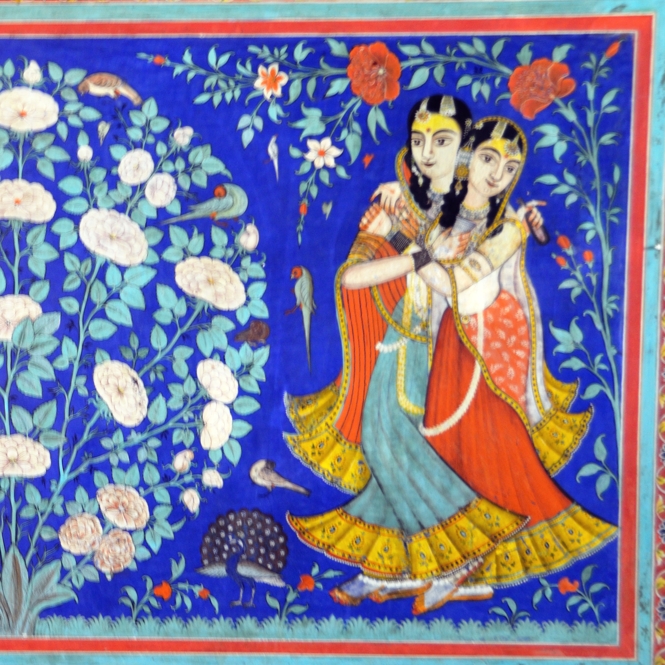
People travel to Samode for different reasons. Locals make a pilgrimage to the locally famous Hanuman temples. The rich go for business or to chill out in the palatial interiors of the heritage hotels. Some travellers going to Shekhavati stop here to have a glimpse of the Sheesh Mahal (the Palace of Mirrors). I visited the dusty town for a combination of these reasons and found another reason, a half-day hike in the Aravali Hills whose sandy ochre wrap is sparingly dotted with stunted thorny trees.
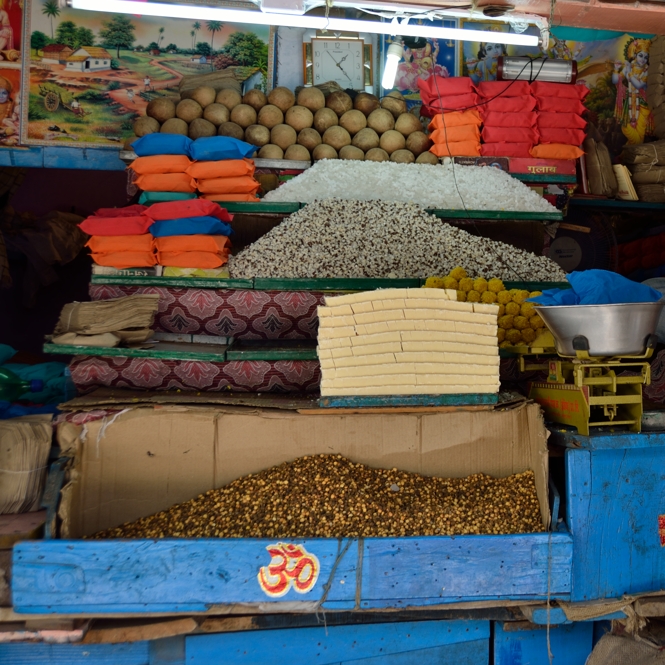
The hike starts from the parking near Samode Palace Heritage Hotel. The first part of the trail comprises more than 300 steep steps. The steps end at a water point, where the sandy trail forks. The short left side trail ends at the Samode Fort. About three km long well-marked right side trail merges into a flight of about 200 steps leading to Akmukhi Hanuman Temple / Samode Ke Veer Hanuman Ji. While negotiating this flight, langurs would assess you for food items. The prasad sellers would call louder to gain your attention. The temple is a perfect destination for devotees of the monkey god (Hanuman) but it lacks artistic and architectural merit. The red-colour sculpture with big eyes is carved out of a seven-foot tall granite rock block.
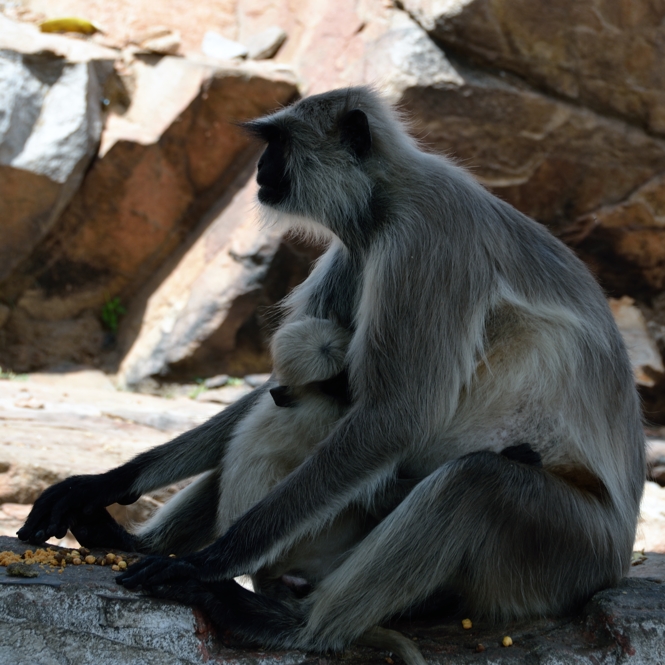
On the latter trail you will find a rusted faded signboard that reads ‘Way to Punch-Mukhi Hanuman Temple’. From here, the right side trail goes to Punch-Mukhi Temple and the left one to Akmukhi Temple. A natural cave in granite rocks near Punch-Mukhi Temple is popular with worshippers of Shakti.
During this hike, you will see two more forts and the connecting sandy trails snaking through the hills. All three forts are private properties. The owners open forts at their convenience, especially during off-season. I visited Samode Fort twice in the last week of April. Both the times big locks stared at me. But the locks compelled me to believe that some treasures are hidden behind the doors. To satisfy my curiosities, I tried to contact mobile number mentioned on the gate. But no one answered.
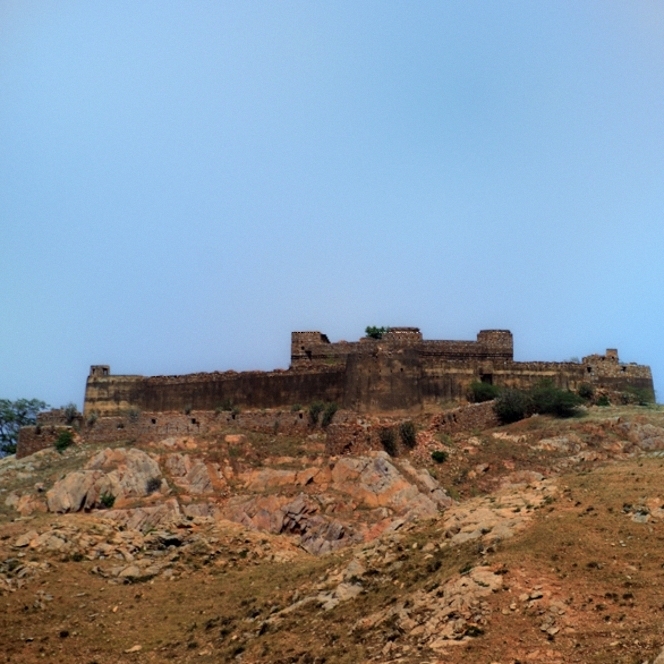
The ramparts of the forts command good views of the hills and hamlets standing on the sandy ground. To get a clear view, start early in the morning or take a walk in the late evening. Between 11:00 am and 03:00 pm, the scorching sun tortures both the desert and the visitors.
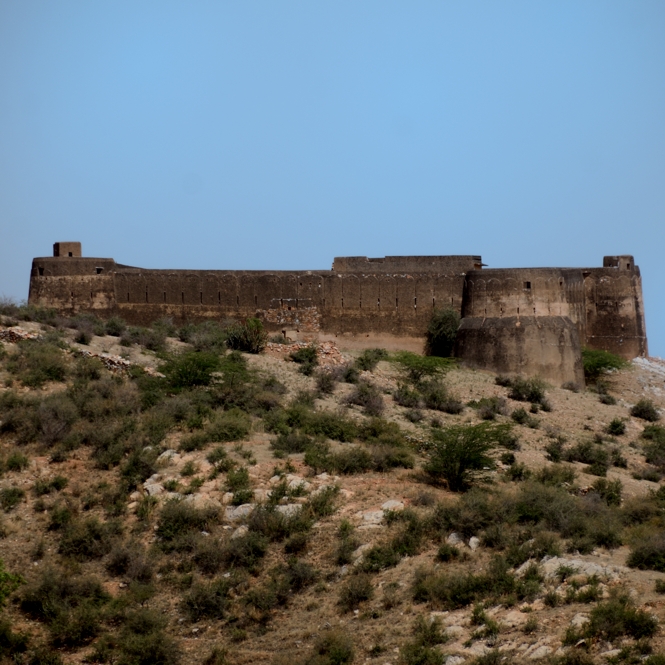
Several donkeys accompanied me and the other pilgrims walking the trail. Loud hee-haws of donkeys and the hot howling wind dominated the sounds of the desert.
Hiking is the only way to visit these forts and temples. There are no roads leading to these spots. Carry food and water because the trail does not have any eateries, especially the section between two flights of steps. But I spotted water pots hanging from some of the trees offering shade for the pilgrims. The pots quench the thirst of birds that dare to fly over the desert. Three high-end hotels and the luxury home stay are within the town. Parking near the palace is free.
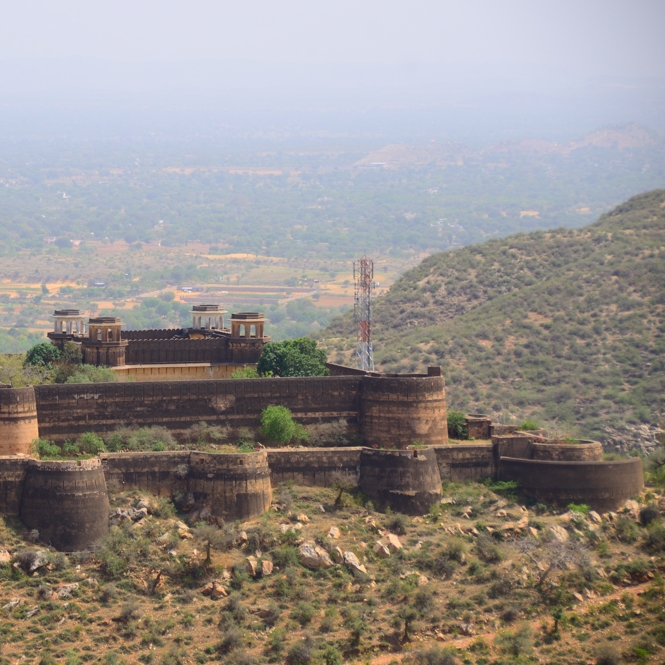
Sip water frequently to compensate for the loss of body minerals and water due to excessive sweat.
There is no need for a guide for this trail. The path is clearly marked, so you can do it on your own.
After the end of the hike, buy an entry ticket (INR 1,000 per Indian visitor) to Samode Palace that opens between 10:00 am and 05:00 pm. A part of the well-maintained palace is still a residence of the noble family. The non-guest ticket includes a visit to the Sheesh Mahal, a peep into the Durbar Hall, some food, photography fee, and a guide.
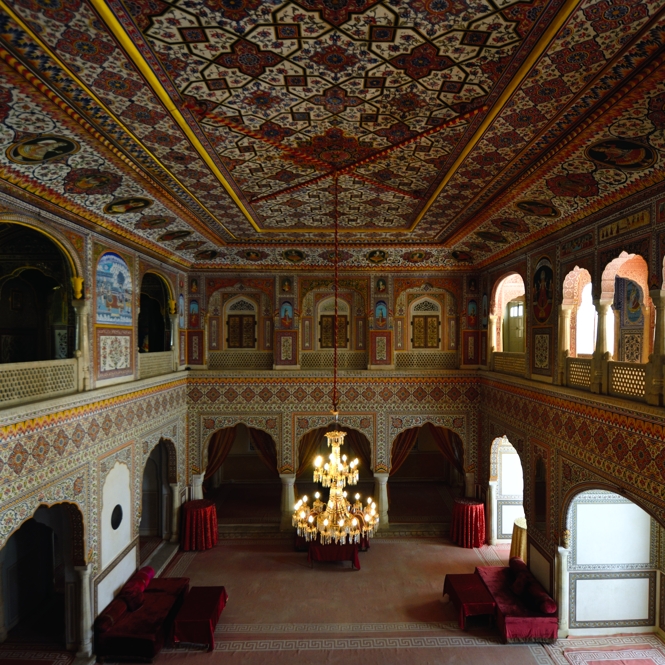
The Sheesh Mahal shimmers in soft lights. The walls and ceilings of the mahal are decorated with gold work, ruby, and other semiprecious and precious stones preserved under glass. The hall is one of the finest examples of meenakari (enamel work). The scenes from hunting expeditions of royal men and women are painted amid colourful floral motifs inside the mahal. One of the wall paintings shows the home of Shiva and another one has a scene from the life of Rama. Radha and Krishna figures find place on one of the exits. In the outer corridor, walls are adorned with floral motifs in pastel blue vegetable colours. High maintenance standards indicate newness but it is an old building.
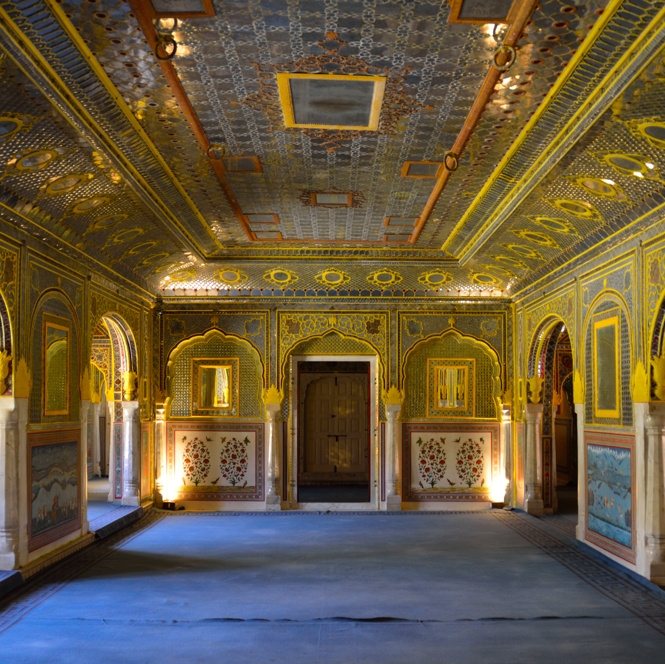
The mahal, known for its mirror work, commands a bird’s eye view of the Durbar Hall and tempting waters of the swimming pool. From the terrace of the mahal you can get a glimpse of the Samode Fort. According to legends, a secret underground path connected the fort and the palace and it has tickled modern television programme makers’ fancy.
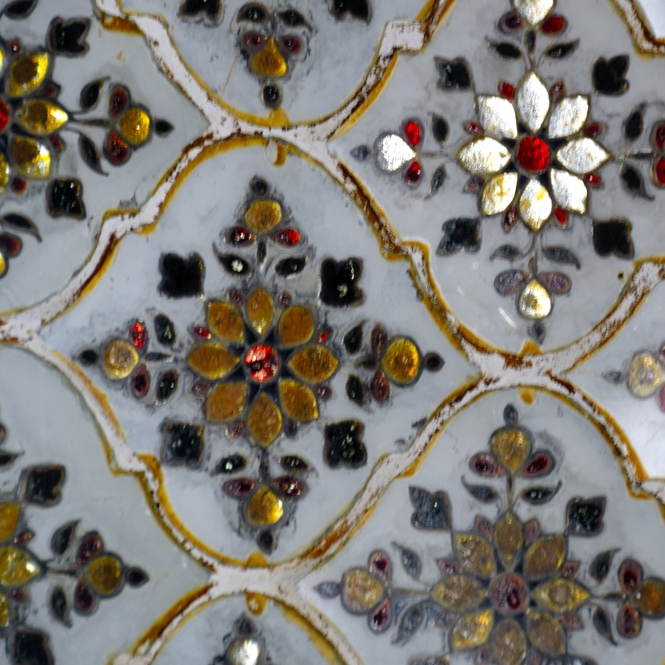
For example, the Season 7 of MTV Splitsvilla was shot at the palace. American TV serial, The Far Pavilions, was also shot here. The Far Pavilions, a romantic novel by M.M. Kaye, is set in India of the 19th century.
Interestingly, the palace was not the home of a king. It was, in fact, the home of a noble family (rawals) of Samode. So it is a haveli, the house of noble. The three-level palace is surrounded by the Aravali Hills. The rooms are built around a central courtyard. The architecture is a combination of Mughal and Rajput styles. About three km away from the palace is Samode Garden, which is a heritage-tented hotel. Day visitors can visit the garden for a fee. The Mughal style garden was a relaxation spot for the noble family.
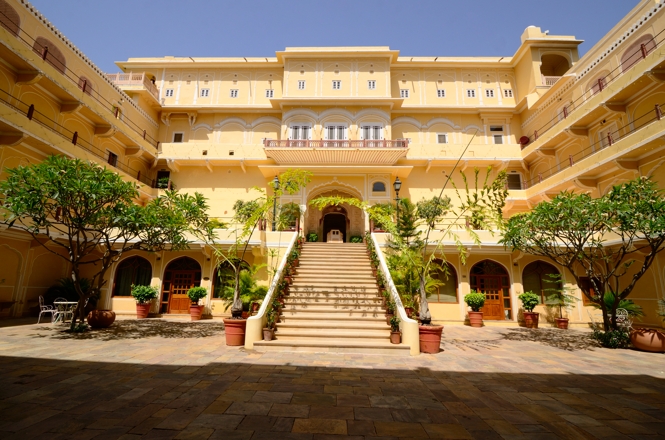
If you still have energy left and also the interest in local architecture, try to visit Dhabhai and Shah havelis. These are also private properties. The former belongs to Yadavs who worship Krishna, whereas the latter is the home of a Marwari trader. The Shah Haveli’s façade is decorated with paintings. Then it is the time to drive back to Jaipur, about 40 kilometres south of Samode town built on a hillock.





